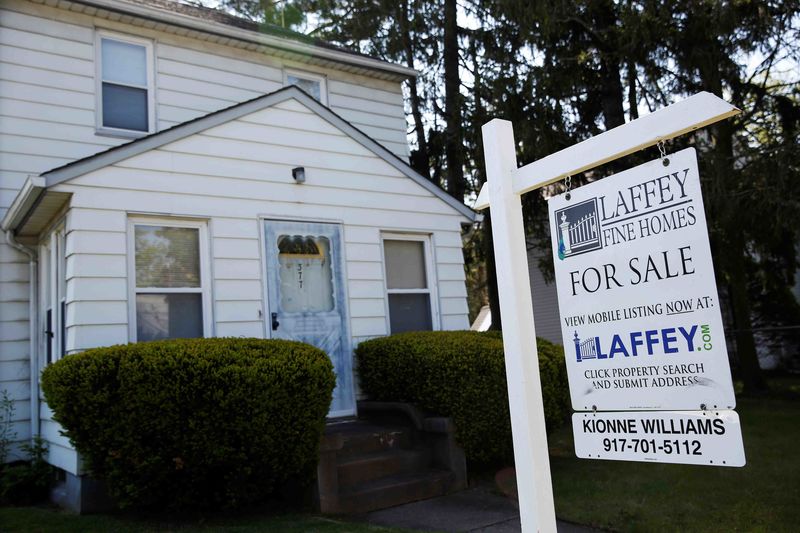This post was originally published on this site
https://i-invdn-com.akamaized.net/news/LYNXNPEC4P16A_M.jpg
The Fed bought around $300 billion of the bonds in each of March and April, and since then has been buying about $100 billion a month. It now owns almost a third of bonds backed by home loans in the U.S. Buying the securities has pushed mortgage rates lower, with the average 30-year rate falling to 2.91% as of last week from 3.3% in early February.
That drop has allowed homeowners to refinance their mortgages, tantamount to giving them a raise by cutting their monthly loan payments. It’s also helped consumers buy homes. But the Fed’s efforts are causing its balance sheet to balloon, and with the central bank owning so many U.S. home loans, it has unusually high power over setting mortgage rates.
The Fed’s purchase efforts started off with a bang on March 15, when it said it was slashing its benchmark interest rate back to 0% and would purchase “at least” $200 billion of mortgage-backed securities. On March 23, the central bank signaled its willingness to buy near-unlimited amounts of the debt, changing “at least” in its statement to “in the amounts needed.”
By the end of that month, mortgage purchases totaled $291 billion, an average of $23.4 billion per day. That was in a month when just $162 billion of mortgage bonds were created.
Morgan Stanley (NYSE:MS) analysts pointed out in late March that the buying was running at eight times the pace seen in prior episodes of Fed purchasing under programs known as quantitative easing, a pace that has since slowed. The current monthly rate of about $100 billion translates to about $40 billion net, after accounting for borrowers’ principal repayments from the mortgage bonds already on the Fed’s balance sheet.
The latest statement from the Fed has promised to keep buying “at least at the current pace.” If the central bank does so, by year’s end it will have purchased about $1.4 trillion in mortgage bonds — and added around $900 billion net to its holdings.
Fueling Growth
That purchasing will fuel the growth of the mortgage-backed securities market, which finances the majority of the roughly $11 trillion of U.S. single-family home loans outstanding. Back in December, consensus was for net supply to come in around $265 billion this year — a level that would be right in line with the annual average of $270 billion over the last half decade. JPMorgan Chase (NYSE:JPM) & Co. analysts last month raised their forecast to $390 billion, which would be the highest since 2009.
According to the JPMorgan analysts, the increased size of the market makes the Fed’s pace of buying sustainable. Between September 2012 and October 2014, during a quantitative easing program known as QE3, the Fed owned a record 34% of the market.
Just before this latest round, principal payments from its mortgage bond holdings had whittled that down to 21%, but it has now increased back to 30%. If the Fed maintains its current buying pace, it will again own 34% of the mortgage universe by year’s end, the analysts added.
Supporting Economy
The Fed’s purchase activity has allowed risk premiums, or spreads, on mortgage bonds to remain little changed now compared with the end of last year. It has also helped improve mortgage-bond returns for the year, compared with performance in the first few months of 2020. The Bloomberg Barclays (LON:BARC) U.S. MBS index’s has bounced back to -0.34% as of Friday’s close from a year-to-date low of -2.87% on March 19.
Buying so many home loans is the right thing for the central bank to do to support the economy, Kevin Jackson, a managing director on the mortgage trading desk at Wells Fargo (NYSE:WFC) & Co., said in an interview with Bloomberg.
“We had a pandemic arise and you needed a force to come into the market and stabilize things,” Jackson said.
©2020 Bloomberg L.P.
